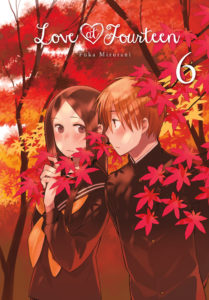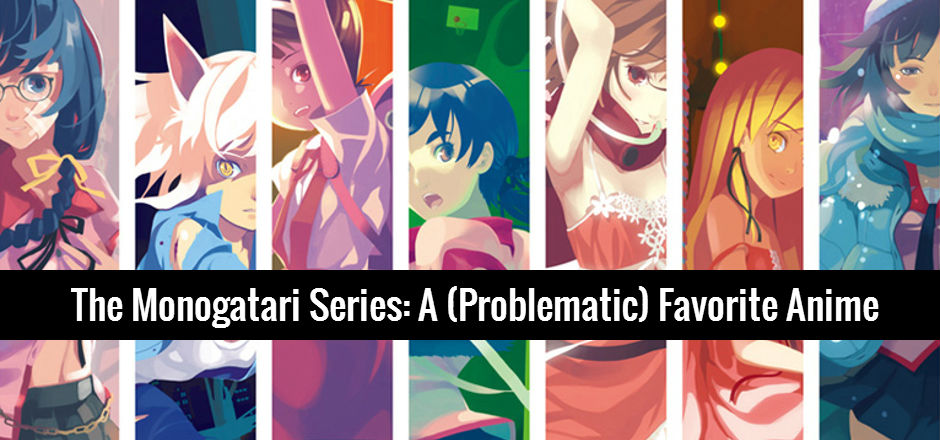Kanata Tanaka and Kazuki Yoshikawa are very grown-up for middle schoolers. Between Kanata’s womanly grace and Kazuki’s sophisticated manliness, the rest of Class 2-B is awed – and a little intimidated – by their maturity, seriousness, and good grades.
But Kanata and Kazuki really don’t feel mature at all, and they meet secretly to goof off and blow off steam – but during their second year of middle school, they start dating as their friends experience their own awkward, painful love stories.
The time has arrived for the class’s field trip to Kyoto, and the students of Class 2-B have confession fever. Kanata realizes neither she nor Kazuki have ever said their feelings aloud. *
Volume 6 of Love at Fourteen focuses on addressing and communicating the students’ feelings: desire to confess to their crushes, the pain of unrequited love, and — in one case — what those feelings mean at all.
An extremely uncomfortable aspect of Volume 6 is the continued emphasis on romances and crushes between middle school students and the adults in their lives, in particular between students and their teachers. Students having crushes on teachers — especially student teachers or young teachers — isn’t uncommon or particularly unnatural, but it’s another matter entirely to depict that teacher being romantically or sexually attracted to the middle school student.
Hinohara-sensei, the middle school’s music teacher, is portrayed in a way I find especially disturbing. In this volume, her behavior towards one of the male students comes off as particularly manipulative, something that I mentioned in my review of Volume 5. This volume also implies she has a romantic and/or sexual attraction to him, which makes me feel gross to read, because in a lot of ways, her actions throughout the series are things that child predators do to groom the children they’re targeting.
There is absolutely a real danger in portraying a romantic and potentially sexual relationship between a fourteen-year-old student and a teacher at least ten years older than him. There’s absolutely a power dynamic between students and teachers that can’t be ignored, and in the United States, relationships of the nature implied in the story are very illegal. It also encourages potentially unhealthy behavior in middle schoolers to be told that romantic relationships with teachers are a path with potential when they are, by nature, extremely unethical.
It’s incredibly unfortunate that this volume puts so much plot emphasis on multiple students’ attractions to Hinohara and her extremely unethical relationship with one student, because Volume 6 also contains one of the most important scenes in the series: when the school nurse reveals that she knows Shiki, one of the students in 2-B, is attracted to other girls.
[blocktext align=”center”]It’s okay. It’s not strange. And it’s not an illness. It’s not something you need to be cured of.[/blocktext]
Before leaving the nurse’s room, Shiki realizes that this moment is one she’ll probably remember for the rest of her life: the moment that someone told her that her feelings are valid and not wrong. It’s one of the most sensitive treatments of LGBTQ themes I’ve seen in a manga outside of a specifically yuri title, and it’s something that some kids do need to hear.
This volume also deals with Kanata’s self-consciousness about her weight and what could potentially become an eating disorder in a way that’s sensitive and easy for middle school students to understand.
I really wish the series would move away from depicting an extremely unethical and manipulative “romantic” relationship between a student and a teacher, because this volume in particular contains some themes and messages that would benefit both middle and high school aged readers.
As a reader and as a reviewer, I hope future volumes will work towards showing healthier relationships. I’ve always enjoyed this series due to its realistic depiction of Kanata and Kazuki’s relationship, but as literally every plotline touched by Hinohara-sensei develops, I become more and more disturbed and distracted from what I originally enjoyed about the story, as well as being distracted from things about the volumes that I do enjoy.
Because it not only fails to address the dangers teens face when being pursued by adults but frames this abusive behavior as “romantic,” it’s difficult for me to recommend this volume as as enjoyable to read. It can be especially difficult for those who have survived this form of abuse, so if you fall into that category, this is probably a volume to skip.
Story: 3 out of 5 stars
Art: 3 out of 5 stars
Overall: 3 out of 5 stars
Goodreads | Indiebound | RightStuf
This review contains affiliate links. While Girls in Capes does make revenue from purchases made at affiliate links, reviews are not paid, and all reviews contain the staff writers’ honest opinions of the work.







